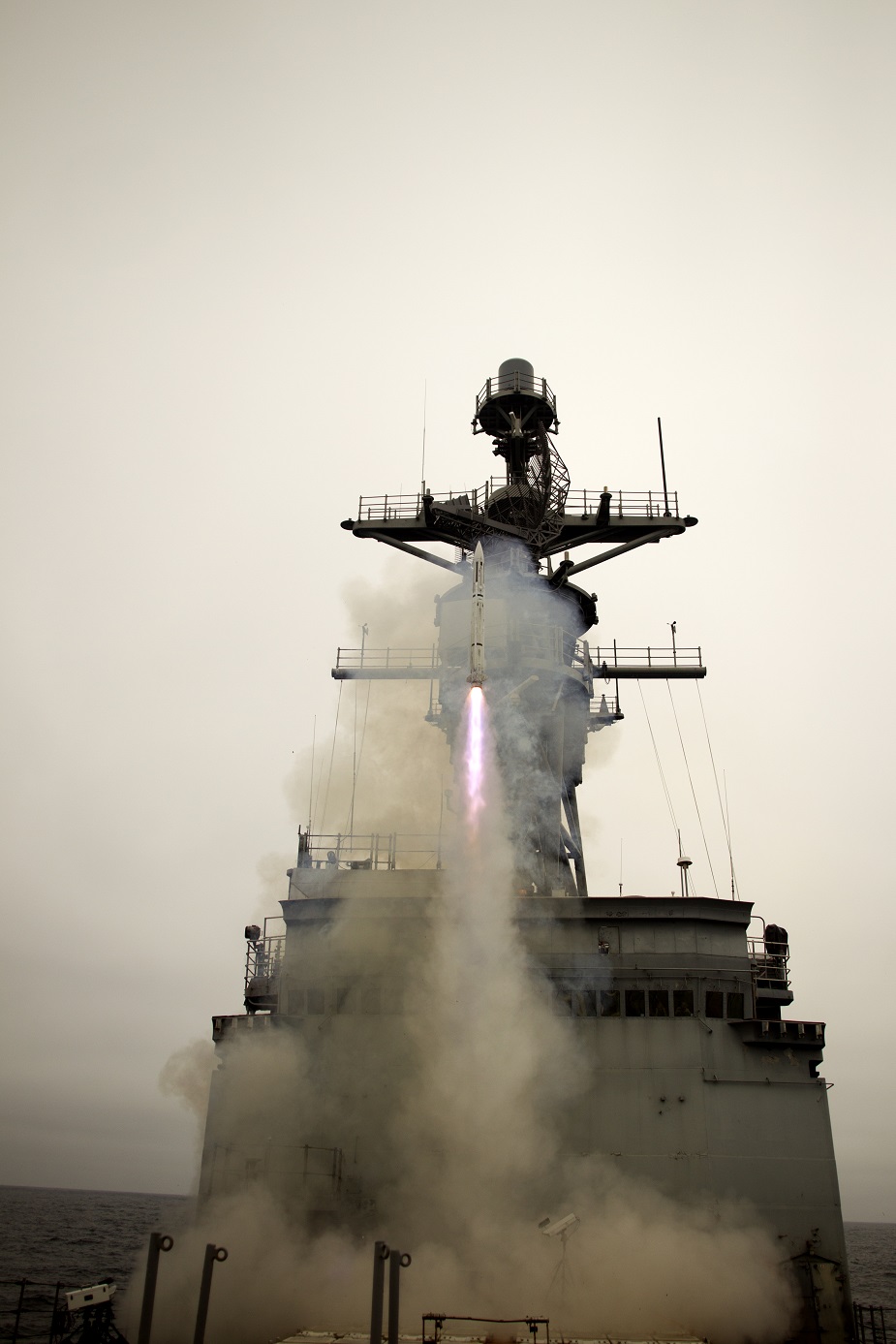Breaking news
Raytheon’s layered defense, naval solutions for the world.
Raytheon Advertorial
Gerard Hueber, Raytheon Naval and Area Mission Defense business development vice president, provides insight into the missile systems protecting navies around the world.
 The Evolved SeaSparrow Missile is Raytheon's intermediate layer of defense and creates the foundation of several allied navies and their anti-ship missile defense efforts.
The Evolved SeaSparrow Missile is Raytheon's intermediate layer of defense and creates the foundation of several allied navies and their anti-ship missile defense efforts.
Navy Recognition: Raytheon often speaks of layered defense for naval vessels. Is there still a demand for this type of security at sea?
Gerard Hueber: Absolutely. Raytheon offers a complete family of mission solutions to the United States Navy and allies around the world. Our products, designed to defend against highly advanced threats by the use of a layered defense concept, not only protect ships but they protect those carrying out the mission. We understand this and it has been our unwavering duty to continue providing the best product for customers.
 Gerard Hueber, Raytheon Naval and Area Mission Defense business development vice president.
Gerard Hueber, Raytheon Naval and Area Mission Defense business development vice president.
NR: Could you provide a background of what products create this family of mission solutions?
GH: Sure. This family consists of an overlapping layers of defense and Raytheon focuses on defeating threats initially from a long range perspective. Although, it is also necessary to provide protection on the intermediate, short range and close-in arena.
The Standard Missile 6 brings a multi-mission weapon to the fight, carrying proven over-the-horizon protection in an offensive and defensive manner. The active radar on the SM-6® allows it to be independent of the ship’s guidance if needed and places the missile in missions supporting anti-air warfare, anti-surface warfare and sea-based terminal defense. Essentially, it is one missile with three missions.
Our Standard Missile 2 provides an extended reach in the naval battlespace and serves as an integral part of layered defense. The SM-2™ has an impressive legacy of more than 2,700 successful firings and just last year Raytheon restarted this missile line to a full rate to meet global demands from international customers. We expect to deliver the initial order in 2020 which will be part of more than 280 SM-2 Block IIIA and IIIB missiles. Additionally, at the direction of the U.S. Navy, we are already working to add an active seeker to the next variant, the SM-2 IIIC.
Evolved SeaSparrow Missile is our intermediate layer of defense and creates the foundation of several allied navies and their anti-ship missile defense efforts. Lately, the 12 nations of the NATO SeaSparrow Consortium have been basking in success with the recent achievements in testing the ESSM® Block 2 variant. This cooperative effort will upgrade the missile with a new guidance system featuring a dual mode active and semi-active radar while retaining Block 1 capabilities.The manufacturing of the Block 1 variant continues as we progress with the Block 2 efforts. As testing brings us closer to initial operating capability, the Block 2 variant is on track to enter production in 2020.
The Rolling Airframe Missile protects ships against a long list of constantly evolving threats and provides a short-range defense solution. More than 165 ships in eight countries carry the RAM™ and SeaRAM® to protect their ships and sailors from anti-ship missiles, hostile aircraft and surface threats. The RAM is an international cooperative program between the United States and Germany, with development, production and maintenance costs shared among Raytheon and the German companies LFK, DBD and RAMSYS. Currently, two variants are offered for RAM, the Block 1 and Block 2. The Block 1 carries an image-scanning IR seeker with autonomous infrared guidance all the way to the target. The Block 2 brings significant kinematic performance that features a larger rocket motor, advanced control section and an enhanced radio frequency receiver.
The Phalanx® weapon system is a rapid-fire, computer-controlled, radar-guided gun that can defeat anti-ship missiles and other close-in threats on land and at sea. At sea, it is designed to defeat anti-ship missiles and “close-in” threats that have pierced other lines of defense. On land, as part of the U.S. Army’s counter-rocket, artillery and mortar systems, it detects and destroys incoming rounds. It also helps provide early warning of attacks. The Phalanx weapon system is installed on all U.S. Navy surface combatant ship classes and on those of 24 allied nations. The land-based version is forward deployed and has been used effectively in combat. Recently, we have been upgrading the technical aspects of Phalanx, or refreshing the product. One aspect of this tech refresh encompasses replacing the pneumatic gun with an electric version, increasing reliability and reduces operating costs.
 ESSM Block 2 during its first guided test flight.
ESSM Block 2 during its first guided test flight.
NR: It sounds as though you are upgrading everything in your portfolio. Is this necessary?
GH: Without a doubt, yes. We have purposely created an upward spiral of development and product enhancement which allows allied navies to maintain an advantage while at sea. Raytheon builds products with the purpose of remaining ahead of threats, thus enhanced protection for sailors around the globe. Active guidance, such as the case with the ESSM Block 2, is one of the many advancements being added to our missiles. This superior capability allows our missiles to be guided towards a target, all without the direction from ship controls.
NR: The NATO SeaSparrow is celebrating their 50th anniversary. What does it mean to achieve such a milestone?
GH: We are fortunate to work alongside the NATO SeaSparrow Consortium and the collaboration of these countries prove the ESSM is truly the “International Missile.” Undoubtedly the largest and most successful cooperative weapons project, the ESSM Block 2 proves the Consortium’s unwavering commitment to evolve the missile and protect the mission and sailors. Added, this variant represents the future of the Consortium and the NATO SeaSparrow program.
NR: What does the future hold for Raytheon’s naval weapons?
GH: There will always be a need for naval mission security and Raytheon has the solution. We intend to continuously provide innovative, capable weapons to allow customers to have a clear advantage whether at sea or on land. The technology we are able to generate stems from leveraging our internal investments with customer funded research making Raytheon the preferred provider of mission defense systems and the leader in naval air defense. From naval air defense to land based solutions, we have one paramount goal: protect the mission and those carrying out the mission.


























